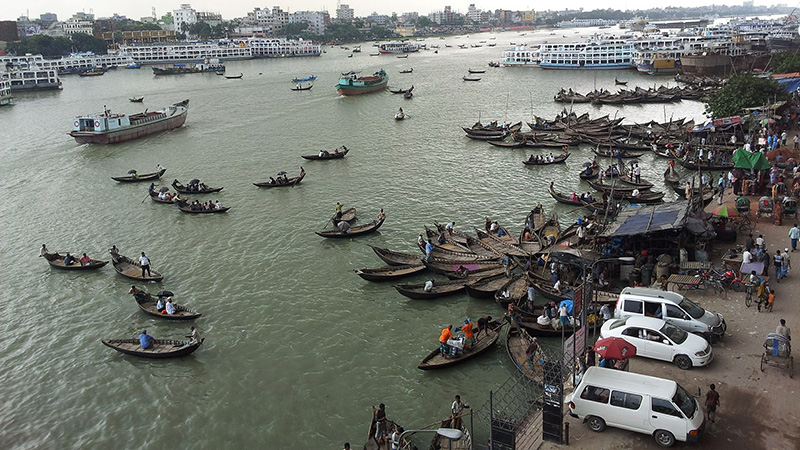Over the past decade, nations across the world have acted to adapt to the effects of climate change.
Small island states shored-up sea defences to protect from storm surges, other nations built up water resources and irrigation systems in the face of worsening droughts and others climate-proofed infrastructure in cities and elsewhere.
But until now however, country governments, donors and civil society have been taking their best guess at what might work. It has been impossible to know for sure what will be sufficient to protect infrastructure, investments and people from the uncertain future impacts.
As part of the Paris Agreement adopted last December, nations committed to improve the effectiveness and durability of adaptation actions.
To assess progress towards this goal, they will take stock of the effectiveness and adequacy of adaptation efforts every five years. Nations will continue defining this “global stocktake” in the coming Marrakesh negotiations.
Weekly briefing: Sign up for your essential climate politics update
However Parties to the UNFCCC will need to address some questions to be able to make this adaptation meaningful.
It has been challenging to measure and assess the effectiveness of adaptation to climate change. Adaptation activities are wide-ranging, with objectives that vary from addressing existing development gaps to explicitly considering future climate risks. There is often a lack of data and indicators to capture changes over time in the context of climatic uncertainty.
The International Institute for Environment and Development (IIED) has been working with national governments for the past four years to address some of these challenges, developing frameworks and indicators to assess adaptation success.
The results of this work have several important findings for how the UNFCCC can really assess whether the world is doing enough to adapt to climate change.
Our work shows the effectiveness of adaptation can be tested in several different ways.
The approaches can focus on either the process of adaptation such as improved planning systems for climate change, or the outcomes such as fewer deaths from climate-related extreme events.
This leads to different ways of assessing progress.
Progress can be measured through indicators that track institutional changes such as improved use of climate information in planning and improved budgeting for climate change. But a focus on institutional changes assumes that an improved enabling environment will lead to better outcomes – which may not always be the case.
Another metric is measures of vulnerability and resilience. This seeks to measure the capacities that different actors have to anticipate, absorb and adapt to climate risks and offers a short-term assessment of changes that might support effective adaptation.
Some developing countries have developed indicators to track longer term wellbeing. The metrics used to measure success in these cases are standard development indicators such as income, mortality, education and health access.
Comment: Marrakech talks must focus on global adaptation challenge
Metrics such as these track the ultimate goal of adaptation efforts: that, despite climate risks, development is continuing as anticipated, so, for example, income levels keep rising or female literacy levels increase.
This can be useful for understanding the impact of adaptation but is a very long-term effort and needs long timeframes to see any impact. Such long time horizons make it harder to understand the factors that have influenced development.
The UNFCCC is interested not only in effective adaptation but whether those actions are adequate. To assess whether adaptation is adequate it is useful to identify measures of both quality and quantity.
This starts with defining long-term objectives and then assesses the extent to which these objectives have been reached (quality), by adding a dimension of scope (quantity) – do the objectives cover all aspects of the goals of adaptation?
The aim of a review of adequacy is to determine whether enough has been done. This is linked to three dimensions: finance, sufficient action to be effective and geographical coverage.
Finance: Access to finance is an essential component of implementing adaptation measures: not only its availability but who has access to the funds and who controls how they are spent.
Sufficient action to be effective: A review of adequacy should consider the thresholds at which adaptation efforts are sufficient so that the effects of climate change do not hinder the achievement of other national priorities.
Geographical coverage: Reviewing adequacy should also look at the geographical coverage of adaptation efforts. How much of the country and its vulnerable areas have been covered by adaptation measures? What is the spread of adaptation across space? This should consider issues of social inclusion and environmental justice, and urban and rural coverage.
Finally, whilst gathering data on adaptation is an important task and assessing effectiveness and adequacy is a valuable ambition for the UNFCCC, it is how that information is used to improve adaptation or upscale efforts that is really important.
It is therefore key to focus on information that can be used by global, national and local actors for decision-making, rather than insisting on unique formats and processes for a global reporting exercise that has little relevance to decisions being made.
Given the range of ways to approach adaptation and assess its effectiveness, the UNFCCC needs to take a flexible approach to looking at whether the world is adapting enough.
This needs to keep in mind the range of contexts and adaptation priorities that Parties have, using a system that allows them to track progress whilst also supporting national priorities and effective action on the ground.
Brianna Craft and Susannah Fisher are researchers at the International Institute for Environment and Development
